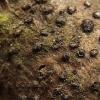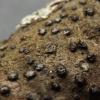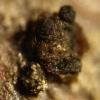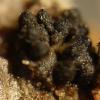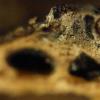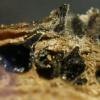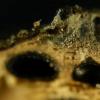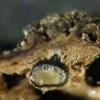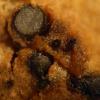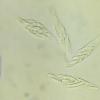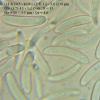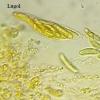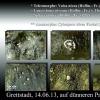
15-11-2025 23:22
Mario FilippaHello,this is what I think to be Hymenoscyphus mac

14-11-2025 16:26
 Marian Jagers
Marian Jagers
Hello everyone, On dead wood of Cytisus scoparius

15-11-2025 20:25
 Riet van Oosten
Riet van Oosten
Hello, Found by Laurens van der Linde, Nov. 2025

14-11-2025 18:31
 Lothar Krieglsteiner
Lothar Krieglsteiner
Hello,can somebody provide me with a file of:Rothe

12-11-2025 09:25
 Viktorie Halasu
Viktorie Halasu
Hello, I need help with a pale terrestric Pseudom

11-11-2025 20:16
Bohan JiaHi, lastly I have found these tiny yellow decayin

09-11-2025 13:20
Hello.A tiny ascomycete, appearing as erupting gra
Valsaceae?
Mirek Gryc,
11-03-2021 15:44
Due to the lack of literature and, above all, lack of experience with mushrooms of this kind, I am asking you for help.
They grew on a dead branch of Malus.
greetings
Mirek
Mirek Gryc,
12-03-2021 11:04
Re : Valsaceae?
I know that the topic is difficult but nevertheless, I got acquainted with the available literature.
It seems most likely to me Leucostoma niveum?
Does anyone confirm my suspicions?
Spores slightly larger than gives a literature for this species but I measured with Ascomata already very mature, in which ASCI has already disintegrated.
greetings
Mirek
It seems most likely to me Leucostoma niveum?
Does anyone confirm my suspicions?
Spores slightly larger than gives a literature for this species but I measured with Ascomata already very mature, in which ASCI has already disintegrated.
greetings
Mirek
Peter Püwert,
12-03-2021 12:15
Mirek Gryc,
12-03-2021 20:07
Re : Valsaceae?
Hi Peter
After returning from work, however, I had to read about this species.
I got acquainted with:
Lawrence Ogilvie - Canker and Die-Back of Apples Associated with
Valsa Ambiens
and
Lindaj. Spielman - A Monograph of Valsa on Hardwoods in North America.
Both of these works confirm your feedback. The size of the spores of my collection is more suitable for Valsa cf. ambiens subsp. leucostomoides.
More contemporary studies of this kind, unfortunately I did not find.
Thank you and best regards.
Mirek
After returning from work, however, I had to read about this species.
I got acquainted with:
Lawrence Ogilvie - Canker and Die-Back of Apples Associated with
Valsa Ambiens
and
Lindaj. Spielman - A Monograph of Valsa on Hardwoods in North America.
Both of these works confirm your feedback. The size of the spores of my collection is more suitable for Valsa cf. ambiens subsp. leucostomoides.
More contemporary studies of this kind, unfortunately I did not find.
Thank you and best regards.
Mirek
Vera Hayova,
12-03-2021 22:57
Re : Valsaceae?
Hi Mirek,
This must be Valsa malicola Z. Urb. It differs from V. ambiens by darkish grey discs, narrower ascospores and often by presence of asexual morph (conidioma) in the same stroma. Try to make sections through the stromata with no perithecial ostioles at the disc surface, and you probably will see both morphs, or at least remnants of conidioma in upper part.
Besides, this fungus has quite restricted host range that is usually confined to Maloideae. Although most frequently it occurs on Malus.
Best regards,
Vera
This must be Valsa malicola Z. Urb. It differs from V. ambiens by darkish grey discs, narrower ascospores and often by presence of asexual morph (conidioma) in the same stroma. Try to make sections through the stromata with no perithecial ostioles at the disc surface, and you probably will see both morphs, or at least remnants of conidioma in upper part.
Besides, this fungus has quite restricted host range that is usually confined to Maloideae. Although most frequently it occurs on Malus.
Best regards,
Vera
Mirek Gryc,
13-03-2021 20:43
Re : Valsaceae?
Hi Vera.
A moment ago, I tried to find an anamorphe. Unfortunately, without success.
The bark is already so damaged that it falls away from the wood. In addition, the fruit bodies were strongly frozen, the temperatures in February often fell to -25 degrees.
Later, I will try to find the collection in a better state to see other features.
Thank you for your help.
greetings
Mirek
A moment ago, I tried to find an anamorphe. Unfortunately, without success.
I am completely convinced that you are right, the features of Telemorphs perfectly match your type.
I suspect that the substrate is too badly damaged, and therefore I can not find amanorfy.
The bark is already so damaged that it falls away from the wood. In addition, the fruit bodies were strongly frozen, the temperatures in February often fell to -25 degrees.
Later, I will try to find the collection in a better state to see other features.
Thank you for your help.
greetings
Mirek
